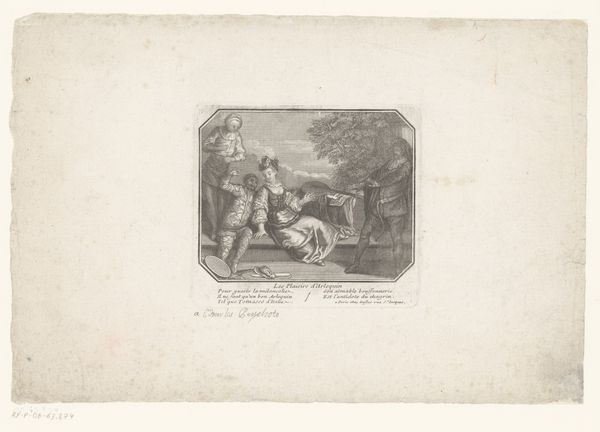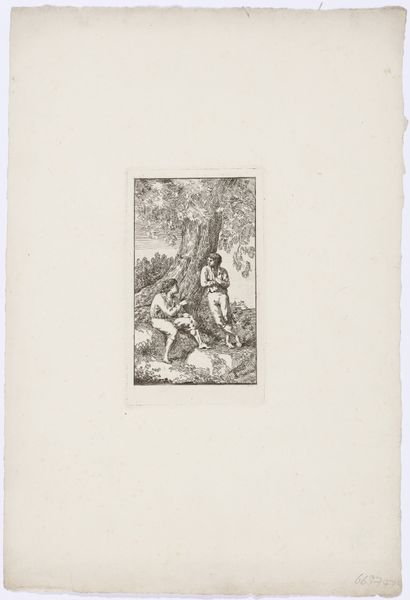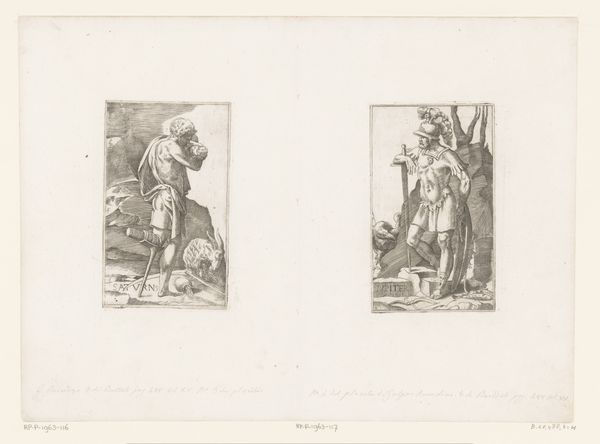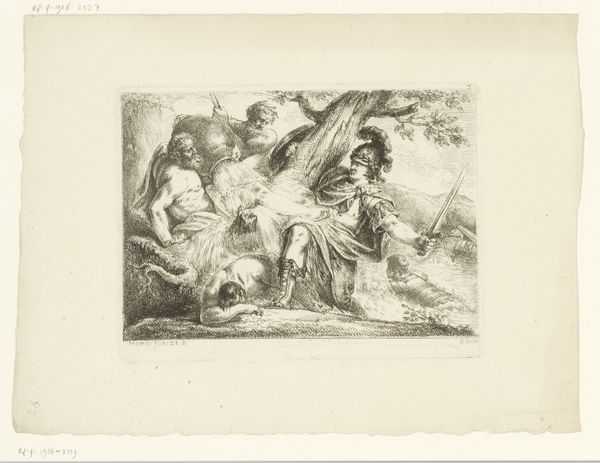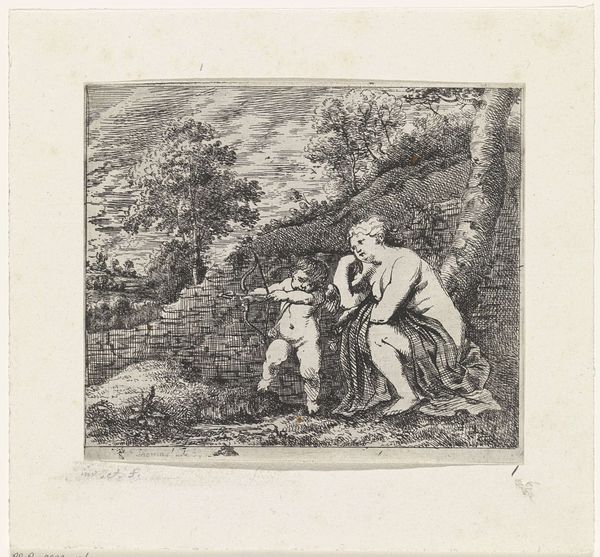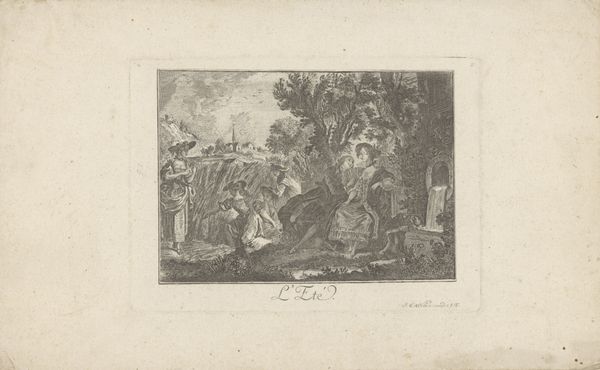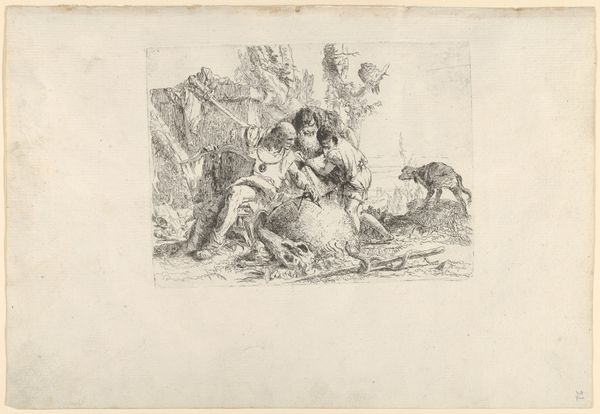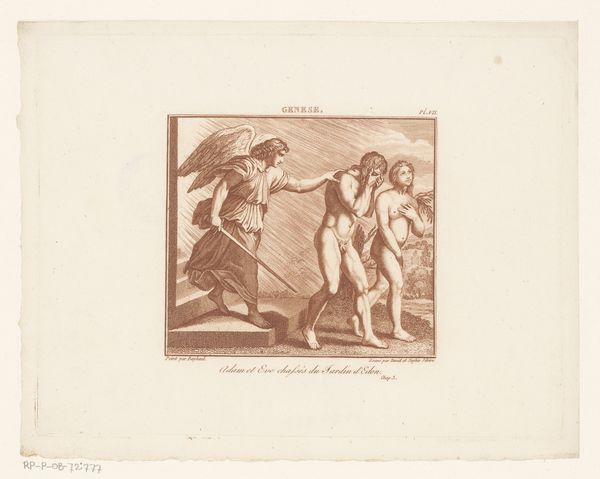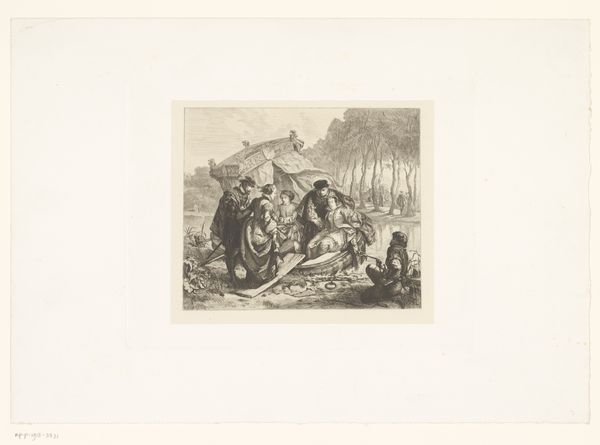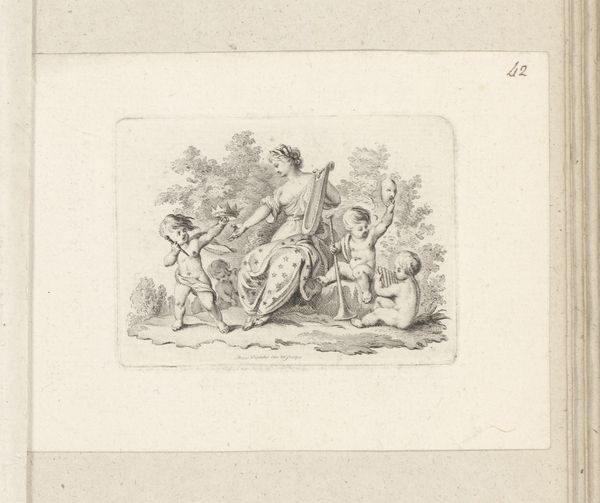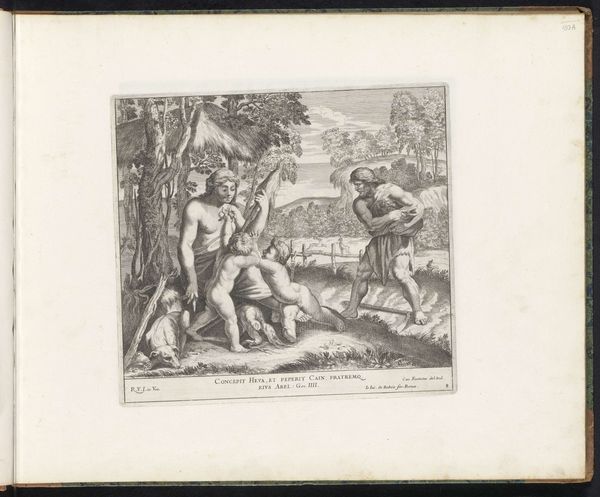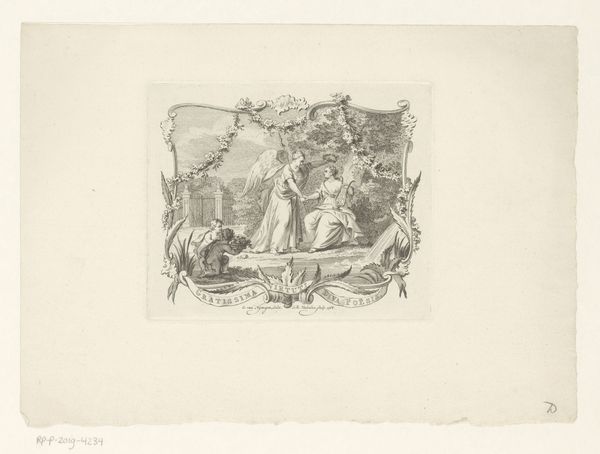
print, engraving
#
neoclacissism
# print
#
old engraving style
#
figuration
#
line
#
history-painting
#
engraving
Dimensions: height 194 mm, width 254 mm
Copyright: Rijks Museum: Open Domain
Editor: This engraving, "Kaïn en Abel" by Sophie Sibire, dating back to 1808, it is striking how detailed and yet almost fragile the lines appear, like it could disappear at any time. The classical approach to a dark topic. What story of production and society can be told through this print? Curator: Well, considering its medium—an engraving, likely printed in multiples—we must examine its purpose in the socio-economic landscape. It isn't solely about depicting the biblical story. Instead, it participates in the circulation of imagery, knowledge, and moral values. How might the labor involved in producing these engravings have been structured? Editor: It’s fascinating to consider. So it’s less about the ‘artistic genius’ of Sophie Sibire and more about the collective effort required to reproduce and disseminate these images? Does that also take into account the demand of art that dictates the work volume? Curator: Precisely! We must consider the system that employed artists like Sibire. What were the printmaking workshops like? What was the social status of the engravers? Was there a hierarchy of labor within the studio system? The rise of Neoclassicism contributed to the growing taste for art reproduced via print. Consider also what it meant to produce religious scenes in a social setting ripe with the development of industry and labor divisions. Editor: It seems so obvious now that you say it! By focusing on the materials and the means of its making we learn not just about the image, but about its time period as well! I guess I hadn't fully thought about how an artist’s livelihood during that period also dictated their creations! Curator: Absolutely. By engaging with art's material reality, we dismantle the myth of isolated genius and understand art as a product deeply embedded in a specific social context. Each impression became not just an artwork but a symbol of changing methods of art's accessibility, ownership and dissemination, reflecting complex dialogues.
Comments
No comments
Be the first to comment and join the conversation on the ultimate creative platform.
